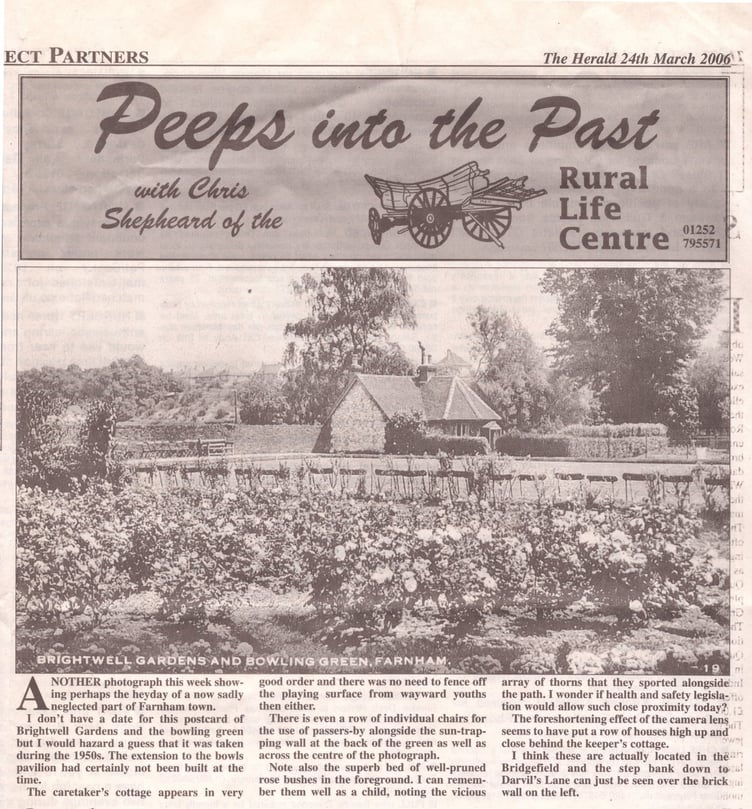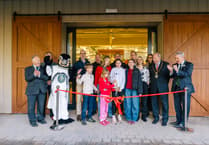With Farnham’s Brightwells Yard development back in the news amid claims that the listed Brightwell House has been “trashed” during conversion work and the opening of the whole scheme delayed yet again, Peeps is this week taking a look back to brighter days for the site in the heart of Farnham.
It is 20 years since developer Crest Nicholson tendered to redevelop the area into a mix of flats, shops with a multi-screen cinema. A grand opening was expected this spring but has now been put back until (probably) this August.
Where there is still building work in progress and shop units awaiting tenants, there was once a grand Georgian building, gardens, bowling green, cosy caretaker’s cottage and the much-lamented Redgrave Theatre.
Looking at the scenes pictured here it is clear the area was a green lung as well as a leisure location in the town centre.
At the core of Brightwells was the Grade II-listed Brightwell House – the subject of controversy over the present and past redevelopment schemes. Built between 1792 and 1795 by local builder Thomas Turner, it was remodelled in 1827 and extended with a west wing added in 1852.
In its official entry on Historic England’s National Heritage List, it is described as having marble fireplaces in three rooms, along with original architraves and skirting boards plus original cornice and window shutters among its other features.
Visitors of note to the building when it was a private residence included nursing and hospital administration pioneer Florence Nightingale and composer Sir Arthur Sullivan of Gilbert & Sullivan fame.
In 1920, the house and grounds were acquired by Farnham Urban District Council and the building was successively used as a library, a health clinic and offices of the local housing department. In 1967 it was offered to Farnham Repertory Theatre Trust as a site for a new theatre.
The north-eastern bay of Brightwell House and its stabling were demolished to provide a home for the purpose-built Redgrave Theatre, while the remainder of the old building housed the green room, dressing rooms, offices, restaurant and bar of the theatre.
The theatre – built with funds raised largely by the community of Farnham totalling £260,000 – opened in 1974 only to close 24 years later in 1998, after which time the landmark suffered neglect and became run down. The theatre was demolished in 2019.
Now, as reported last week, it seems Brightwell House has been extensively damaged during conversion into a restaurant.
According to architect Mark Westcott, who carried out an inspection of the latest work, the structure has been stripped of its Georgian windows and French doors, while original roof timbers have been damaged and disposed of.
Under the redevelopment, the grounds have been dramatically altered too. Although green space is included in the plans, the bowling green is no more and the well-tended flower beds of years gone by have disappeared.
In an article for Peeps in 2006, a reader recalled a “superb bed of well-pruned rose bushes” in the gardens and a row of chairs put out “for the use of passers-by alongside the sun-trapping wall at the back of the green”. These features were the subject of a postcard of Brightwell Gardens believed to have been taken in the 1950s (above right).
The reader commented that in the photograph “the caretaker’s cottage appears in very good order and there was no need to fence off the playing surface from wayward youths then, either.”
When the redevelopment is finally completed, it will bring much-needed homes and may rejuvenate a neglected part of Farnham, but many residents will still mourn for a place once considered picture-postcard perfect.





Comments
This article has no comments yet. Be the first to leave a comment.